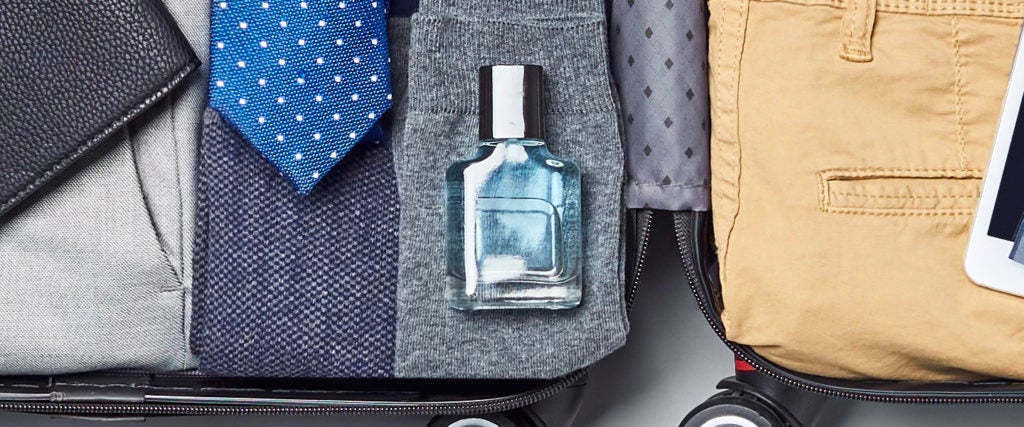Despite the flurry of security measures that took hold directly after 9/11 — stripping off your shoes before you enter the terminal chief among them — it wasn’t until five years later in 2006 that the “Department of Homeland Security banned all liquids and gels from carry-on luggage aboard airplanes.” (It was in response to a terrorist plot to blow up planes flying from the U.K. to the U.S. with peroxide-based liquid explosives.) Ever since, everything from bottled water to coffee to common toiletries like contact lens solution, nail polish, toothpaste, and yes, cologne has had to be surrendered at an airport’s TSA checkpoint.
In fairness, a month later, the TSA did amend its rules governing liquids in carry-on baggage, allowing passengers to bring liquids, gels and aerosols in containers of 3.4 ounces or less in a single, clear, resealable 1-quart plastic bag.
Why 3.4 ounces?
“According to the TSA, limiting containers to what can fit inside a quart-size bag prevents what former TSA administrator Kip Hawley once called a ‘critical diameter’ to blow anything up,” Mental Floss reports.
Per Captain Ross Aimer, CEO of Aero Consulting Experts, when an aircraft has to go through certain design parameters, “one of them is that a passenger jet can fly with one window blown out at 10,000 feet.” So, he explains, “if someone were to sneak a 3.4-ounce bottle of nitroglycerine onto a plane, it can do damage, but the aircraft design would be able to sustain an explosion of that size.”
Of course, the thing about cologne as opposed to the other common toiletries mentioned above — as well as a bottle of water or Diet Coke — is that it generally costs a lot more than a tube of toothpaste or bottle of mouthwash. Not to mention the sentimental value it generally brings. Thus, it can be much more painful — again, if just financially — to watch it be confiscated and tossed in the trash by a TSA agent.
Obviously, you always have the option of putting your cologne in your checked luggage — according to TravelingLight.com, it can contain a maximum of 70 ounces of flammable liquids, which should cover roughly 10 of the biggest bottles of Drakka Noir on the market (at 6.7 ounces per bottle). So you should be good there, even if the TSA hasn’t budged on letting you stuff all that Drakkar in your carry-on. “Each [cologne or perfume in a carry-on] must be in a 3.4-ounce or less container, all containers must be placed inside one clear quart-sized plastic bag and each passenger is only allowed one plastic bag,” TripSavvy.com explains.
It should be noted, however, that a recent, COVID-inspired exception to the rule has been made for hand sanitizer. “As a temporary exemption, TSA is allowing one oversized liquid hand sanitizer container, up to 12 ounces per passenger, in carry-on bags,” the Department of Transportation’s website outlines. “These will need to be placed in a bin during the screening process.”
But while you probably shouldn’t hold your breath waiting for a similar loophole for cologne — so far, unlike hand sanitizer, it doesn’t seem to have magical COVID-defeating powers — you also don’t need to worry that much about it being wrested from your very sanitized hands before you get to your gate. That’s because the average bottle of cologne is exactly at, or under, the 3.4-ounce limit. That includes pretty much every brand you can think of — from the really cheap stuff (Eternity for Men and Nautica) to the really popular stuff (Jean Paul Gaultier and Acqua di Gio) to the really expensive stuff (Tom Ford and Creed).
So fear not. Your flight might cost you your toothpaste, but it should never cost you your favorite scent.

